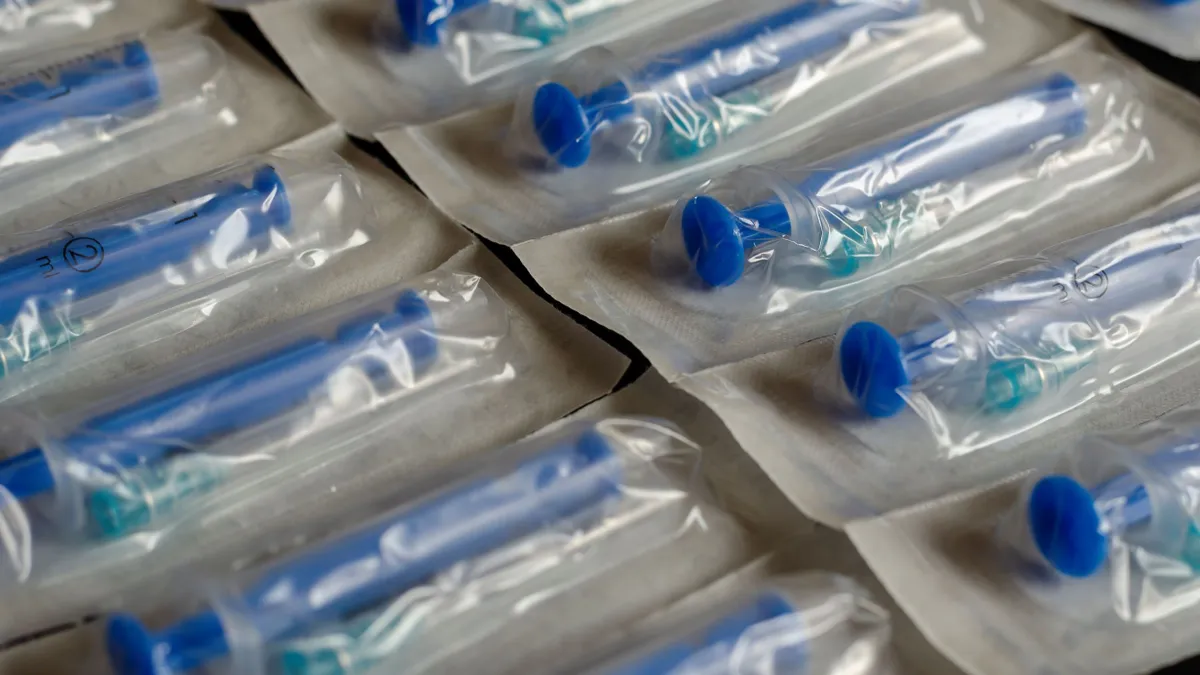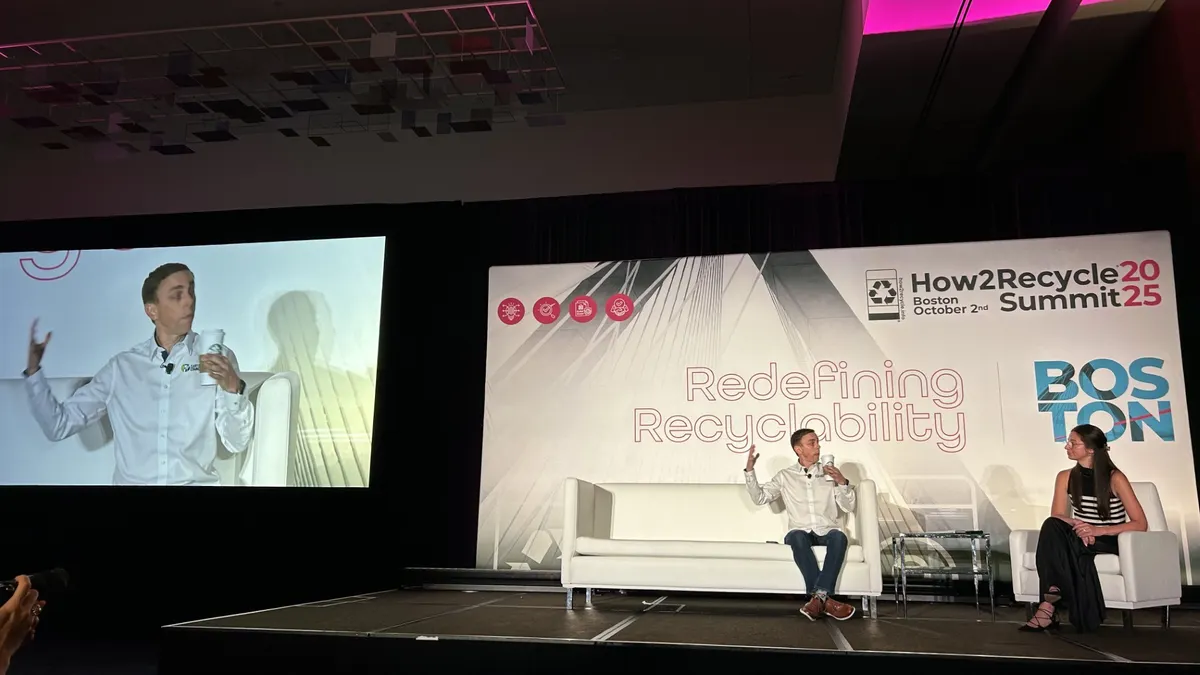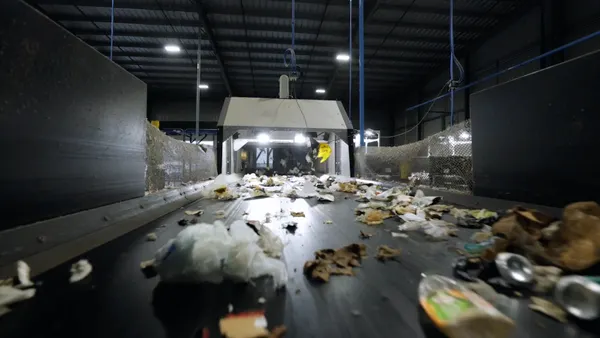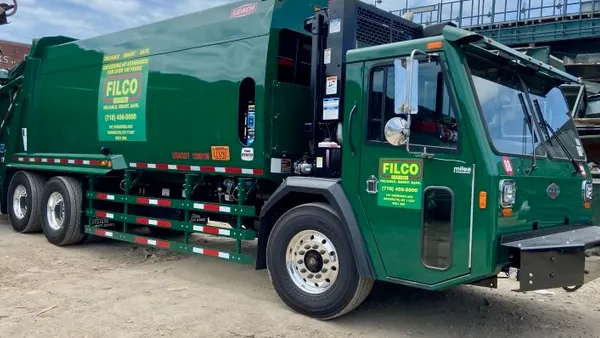Dive Brief:
- The healthcare sector’s dependence on single-use plastics is creating waste, driving up supply and operational costs, and creating more than 4.3 million metric tons of carbon dioxide equivalent emissions, according to a new report from Eunomia and Systemiq.
- Less than 5% of healthcare plastics are recycled through mechanical recycling processes in North America and Europe, the report said. Healthcare systems in the U.S. and Canada generated about 1.2 million metric tons of single-use healthcare plastic waste in 2023, while another 900,000 mt of healthcare plastic waste came from Europe.
- The sector can curb such waste through a range of interventions, such as reducing or reusing some plastic components and focusing on improving recycling systems through pilot programs and consultations with the waste industry, according to the report.
Dive Insight:
Healthcare is a very plastic-dependent sector. Yet efforts to reduce plastic use face numerous complications due to health and safety regulations, supply chain issues and lack of viable alternatives to plastic components, according to the report.
At the same time, waste management of such plastic is “complex, inconsistent and fragmented,” the report states. A large share of healthcare plastic is classified as medical waste and subject to specific disposal or handling standards that can make recycling or waste reduction efforts more complicated.
Interconnected, coordinated waste reduction strategies must include expertise from the health, waste and producer sectors, the report says. The report lists contributors from numerous healthcare professionals, plastics producers, healthcare circularity advocates and representatives from the waste sector such as WM, Veolia North America and the Healthcare Plastics Recycling Council.
Most “low risk” or residual healthcare plastic goes to landfill, but incineration and autoclaves are the main method for dealing with infectious or hazardous waste.
Patient health and safety is the number one job at healthcare centers, but small habits can help reduce waste without compromising patient care, the report says. That could include reducing the overuse of glove changing, or finding “safe, durable alternatives” for items such as gowns or trays.
Where available, healthcare centers can explore packaging substitutions that are paper-based or compostable. And healthcare product designers can do more to design items for recyclability or reuse, the report states.
Hospitals must also work with the waste management and recycling service providers to design straightforward collection and recycling programs with clear end markets. That’s easier said than done.
“Waste contractors should be engaged early in pilot design and supported through contracts that reward material recovery and environmental performance, not just volume-based disposal,” the report states. “Their ability to invest in infrastructure — such as autoclaving, chemical recycling, and mono-material sorting lines — is important to enabling the recovery of healthcare plastics.”
The waste and recycling industry can also play an important role in scaling both the supply and demand sides for recycled content that can be used in healthcare plastics, the report states. Without viable end markets, there’s less of a push for both hospitals and recyclers to invest time and energy in new recycling programs, it said.
Several notable pilot programs have shown the work is scalable, the report said.
One pilot tapped a range of university hospitals to participate in a collection program for Tyvek, an HDPE material used for sterile medical packaging and manufactured by DuPont. DuPont said that program diverted 13,792 pounds of plastic waste from landfill during the first nine months of the program. It sent some of the material to Freepoint EcoSystems to process through chemical recycling technologies.
DuPont carried out the pilot program in partnership with the Healthcare Plastics Recycling Council, a group of plastics producers and recyclers that have increasingly studied chemical recycling as a possible avenue for managing plastic waste from hospital settings.
Mechanical recycling programs are also part of the hospital waste pilot process, the report stated.
In 2023, a pilot program at Northwestern Memorial Hospital in Chicago diverted 5.4 metric tons of waste from landfills in part through a collection and recycling program for non-hazardous IV bags. That program has so far recycled over 170,000 IV bags. The Northwestern hospital system now plans to continue the program and scale it at other locations, according to the report.
One challenge is that the IV bags are made of PVC, which is often considered a contaminant in recycling programs. PVC-specific recycling programs often require special management, which can increase costs, the report said.
Northwestern worked with healthcare supply company Baxter International on the recycling supply chain aspects of the program, and the material typically became feedstock for new products such as playground equipment, according to a news release
Regulatory challenges are another big hurdle to scaling recycling systems for healthcare plastics, the report said.
Healthcare plastics are notably exempt from plastic regulations in both North America and Europe. For example, most health care plastics are not subject to extended producer responsibility programs in some U.S. states, including California. SB 54 sets strict recycling and recycled content standards for numerous kinds of packaging, but excludes packaging for medical devices, prescription drugs and some other kinds of FDA-regulated products.
Oregon, Maine and Colorado have adopted similar exemptions in their state-level EPR frameworks, the report states, and other local laws that ban plastic straws or bags tend to include exceptions for medical use.










